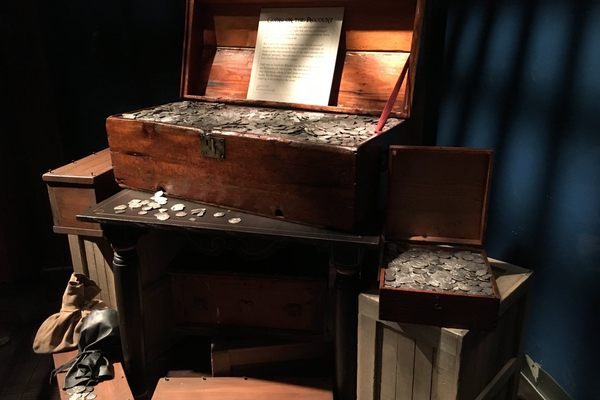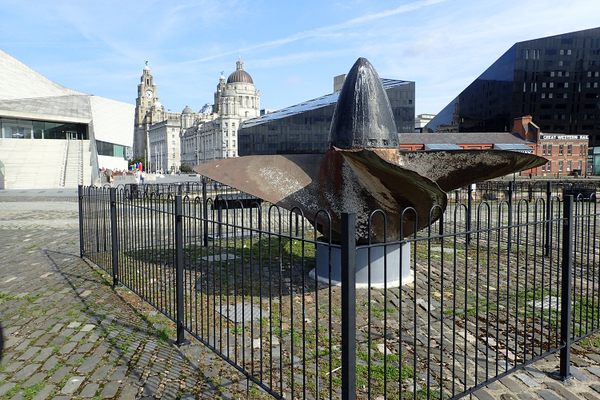About
Every year, hundreds of boats take to the waters of Tampa Bay to fend off a massive piratical invasion, and every year they fail. The attacking ship—a three-masted, 137-foot schooner named the Gasparilla II—barges into the waters of Hillsborough Bay, with the rowdy assailants making landfall and causing mayhem at various ports from Ballast Point Park to the Tampa Convention Center, where the roughnecks accost the mayor and demand the keys to the city. Of course, “Ye Mystic Krewer of Gasparilla” is more of a social club than a band of actual brigadiers, and the Gasparilla II itself is more a float than a true vessel. Though the ship and crew’s namesake—a famed Spanish pirate named Jose Gaspar— likely never even existed at all, that hasn’t stopped his likeness from inspiring the country's largest boat parade.
Tampa Bay’s Gasparilla festivities see 300,000 people flood the city each January. Onlookers crowd the cities waterfronts to get a look at the spectacle, which begins with the “invasion” and accosting of the mayor, then unfolds into a 4.5-mile parade full of marching bands, floats, and 50 varying “Krewes” with their own unifying theme. While it’s all ostensibly to celebrate a fictitious figure, his tale is enthralling nonetheless.
While accounts vary (and all are untrue), the story of José Gaspar goes more or less that Gaspar was born into the Spanish aristocracy in the mid-18th century, attending an elite school before sailing to the Caribbean to seek glory with the Spanish Navy. However, the lives of the pirates he was meant to counter appealed to him more than those of his commanders, such that he mutineered a Spanish vessel and took to plundering merchant ships along Florida’s Gulf Coast, amassing piles of treasure and earning a legendary reputation. Instead of surrendering to a U.S. warship in 1821, it’s said that he lashed himself to an anchor and cast himself into the sea.
Of course, his name appears in neither Spanish archives, U.S. ship logs, nor print of any kind until an early-20th century travel brochure for the now-historic Gasparilla Inn (named after an unrelated priest) featured stories conveyed by a 100-year-old South Florida man who claimed to have been Gaspar’s cabin boy.
Newspaper editors caught wind of the story and, inspired by the success of New Orleans' Mardi Gras, planned a themed parade to accompany Tampa’s May Day Parade. The 1904 “invasion” was carried out on horseback, but as the years passed, Gasparilla came into the possession—if not the borrowing—of bigger and better boats. By 1954, Ye Mystic Krewe of Gasparilla (a social fraternity of moneyed Tampa elites) commissioned the construction of the massive schooner still used today. Without means of self-propulsion, the flat-bottom steel barge Gasparilla II is towed into the harbor each year by tugboats.
Related Tags
Know Before You Go
The best places to view the maritime parade are the Tampa Convention Center, Davis Islands, Tampa Riverwalk, Harbour Island, or any of the downtown Tampa waterfront hotels. The boat itself is often docked at Tarpon Weigh Station on Bayshore Boulevard.
Published
January 28, 2024
Sources
- https://www.wfla.com/news/gasparilla/history-of-gasparilla-jose-gaspar-his-krewe/
- https://baynews9.com/fl/tampa/news/2023/01/12/the-man-behind-gasparilla--who-was-jos--gaspar-
- https://www.fox13news.com/news/the-ship-at-the-center-of-it-all-a-history-of-the-jose-gasparilla-ii#lnlugif1egmo3mwzhur
- https://www.smithsonianmag.com/history/true-history-and-swashbuckling-myth-behind-tampa-bay-buccaneers-namesake-180976918/
- https://tampamagazines.com/the-history-of-the-jose-gasparilla-pirate-ship/#:~:text=Known%20as%20the%20Floridablanca%20when,christened%20her%20the%20Gasparilla%20II.






















